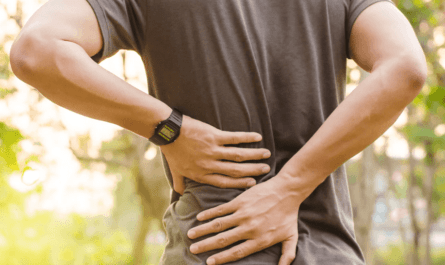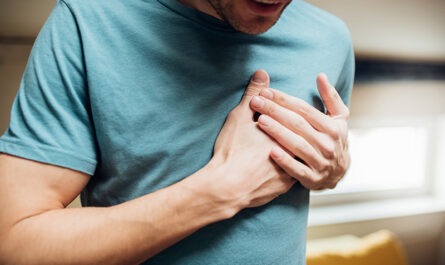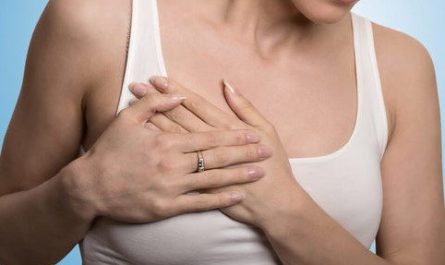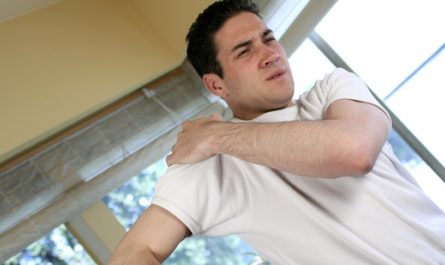If you’ve ever experienced a sharp pain under your left breast, you know how alarming and uncomfortable it can be. This type of pain can range from mild discomfort to severe stabbing sensations, and it’s not uncommon for people to worry about whether it’s a sign of a serious health issue.
While there are many possible causes of pain under the left breast, it’s important to understand what might be causing it and when to seek medical attention. In this article, we’ll explore the potential causes of pain under the left breast.
Is It a heart attack?
Pain under the left breast can be a symptom of a heart attack, but it is not always the case. If you are experiencing severe, persistent pain or pressure in the chest, shortness of breath, sweating, dizziness, or nausea, seek emergency medical attention immediately. (Resource)
Other symptoms of a heart attack may include pain or discomfort in other areas of the upper body, such as the arms, back, neck, jaw, or stomach. However, some people may experience only mild symptoms or no symptoms at all during a heart attack.
What Organs Are Under Your Left Breast?
Several organs are located under the left breast. Here are some of the organs that could be responsible for pain under the left breast:
- Heart: The heart is located on the left side of the chest, and pain in the chest area can be a symptom of a heart attack or other heart-related condition.
- Lungs: The left lung is located under the left breast, and pain in this area could be a sign of a lung-related condition such as pneumonia, pleurisy, or a collapsed lung.
- Stomach and spleen: The stomach and spleen are located in the left upper quadrant of the abdomen, just below the left breast.
- Pancreas: The pancreas is located behind the stomach, and pain in the left upper quadrant of the abdomen could be a sign of pancreatitis.
- Rib cage: The rib cage is located beneath the breast and can cause pain if it is bruised or fractured.
- Breast tissue: Pain in the left breast could be caused by a breast-related condition such as mastitis, breast cysts, or breast cancer.
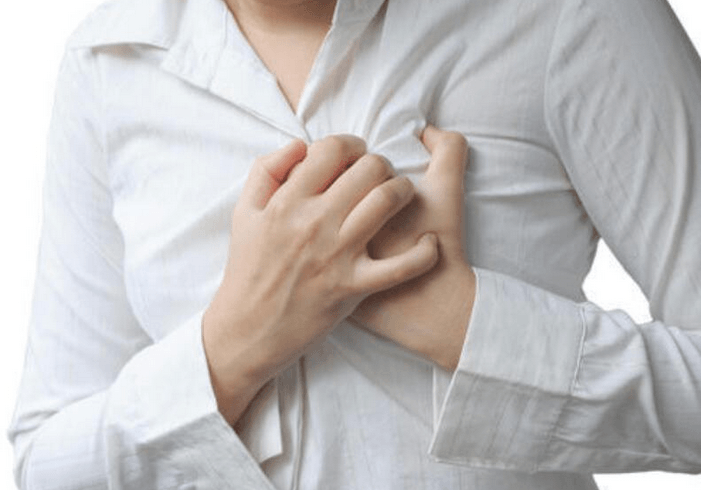
4 Heart-Related Conditions That Cause Pain Under Left Breast
1. Heart Attack
Heart attacks are also known as myocardial infarctions. It occurs when the oxygen-rich blood flow to the heart is completely cut down. A blockage of the coronary arteries usually causes this condition.
The heart is located slightly to the left of the upper body’s midline. Pain under the left breast and back could signify a heart-related complication.
Studies from the American Heart Association, pain due to a heart attack happens towards the center of the chest. The heart attack pain lasts for a few minutes but is recurrent.
According to Heart.org, a heart attack can cause mild pain or discomfort. This pain then becomes sharp and intense that feels like something is squeezing your chest. It can also radiate to your left shoulder, jaw, arm, and neck.[4]
Heart attack pains are severe, intense, crushing pressure sensations, uncomfortable, and sometimes, it can feel like heartburn.
If it is a heart attack, you may experience some symptoms below:
- Vomiting or nausea
- Profuse sweating
- Shortness of breath
- Dizziness
- Heavy, weak arms or shoulders
- A strong sense of anxiety
Treatment Options
If you experience the above symptoms, you should immediately call an ambulance. While you wait, sit down and rest. On top of this, if you are aspirin tolerant, you should take an adult dose tablet of at least 300 milligrams to thin out the blood.
Other treatment options depend on when the symptoms are experienced and how soon you can get medical attention.
The National Heart, Lung, and Blood Institute warns that a heart attack is life-threatening. You should see your doctor immediately when you suffer from cardiac pain. To reduce the risk of a heart attack, you should maintain a healthy diet, drink plenty of water, limit alcohol consumption, quit smoking, and exercise more.
2. Precordial Catch Syndrome
This syndrome is prevalent in teenagers and young adults. The precordial catch syndrome occurs when the nerves of the chest wall get irritated. This happens due to a chest injury, bad posture, or a growth spurt.
This condition can mimic the signs of a heart attack, but it is harmless. It resolves on its own, and many people with the condition outgrow it by the time they are 25 years old.
Doctors from Healthline say that pericarditis can lead to sharp pains behind the sternum. Coughing or sneezing may aggravate this pain, spreading to your left neck and shoulder.
Other symptoms include:
- Sudden onset
- Sharp, stabbing pain
- Intense pain with deep breathing
Treatment and Self-Care
Typically, the doctor will prescribe over-the-counter pain medication. However, you can save the consultation fee and manage it at home by:
- Practicing relaxation techniques to reduce anxiety
- Improving posture to keep the chest cavity open and minimize irritation and pinching
- Deep breathing
3. Angina
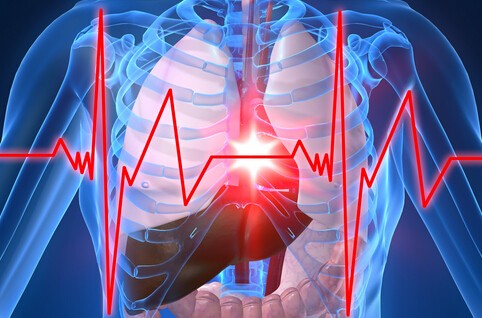
Another common cause of pain on your left side is angina. Angina happens when the arteries narrow due to obstruction, and the oxygen-rich blood flow to the heart will be reduced.
People with high blood pressure, high cholesterol, or being overweight are prone to have angina. In addition, people with poor blood circulation are more likely to get angina.
According to doctors from WebMD, angina can cause sharp pain in your chest and just below your left breast. Sometimes the pain is accompanied by a strange feeling.[3]
Angina’s associated symptoms include:
- Uncomfortable feeling in the neck, shoulders, back, or jaw
- It could also feel like indigestion
- Sweating
- Nausea
- Light-headedness
- Shortness of breath
Treatment
Unfortunately, Angina is a symptom of underlying heart disease. The only treatment option will be to seek medical attention immediately if you notice any of the above symptoms. Usually, the doctor will prescribe beta-blockers, aspirin, statins, or ACE inhibitors.
4. Pericarditis
The pericardium is a thin, layered protective membrane filled with a fluid that surrounds the heart. The pericardium becomes inflamed if it is infected. The body’s immune system attacking itself can also cause the inflammation of the pericarditis.
Acute pericarditis shows the following symptoms:
- Sharp, stabbing pain
- Pain on either or both shoulders
- Worsening pain when lying on your back or taking deep breaths
- Shortness of breath, feeling hot, feverish, sweaty, and light-headed
Pericarditis Treatment
A doctor would typically prescribe OTC anti-inflammatory medication such as ibuprofen. On top of this, rest is recommended until the feverish symptoms dissipate.
However, if there is acute pain, the doctor may prescribe a steroid, for example, prednisone. You will be hospitalized for close monitoring if the condition is far more severe.
With that said acute pericarditis is not preventable. Your best option is to get treatment as soon as possible. Sticking to the prescribed treatment plan will reduce your chances of developing acute pericarditis reoccurring or becoming a long-term chronic condition.
Pain Under Left Breast after Eating – 5 Digestive Related Issues
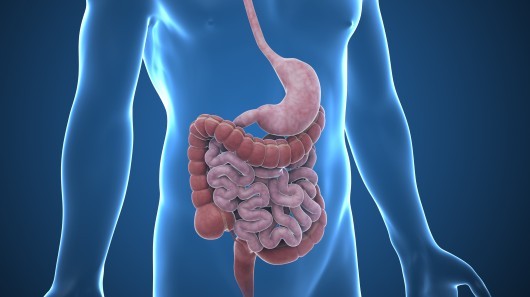
1. Gastritis
Excess gas can cause pain on the left side of your breast. Our digestive tract produces gas every day, but they are usually in small amounts. However, sometimes carbonated drinks or talking while eating can cause excess gas accumulation in the stomach and intestines.
Because our stomach is located on the left side of the abdomen, this trapped gas in the stomach can cause sharp and shooting pain on the left side.
Doctors at the Medicalnewstoday say that gas can cause bloating, a slight burning or stabbing sensation in your abdomen. However, you do not need to worry too much; the pain will disappear after a period.[1]
Gastritis Treatment
Gastritis is manageable at home by changing your dietary and lifestyle choices. You could also get OTC medication, such as antacids, to reduce gastric acid.
Other home remedies include:
- Rather than taking huge portions of food at a go, eat smaller portions often.
- Reduce alcohol consumption
- Cut down or give up smoking cigarettes or any other tobacco use
- Stop eating spicy, dry, fried, or acidic foods and caffeinated drinks
- Reduce your high intake of OTC non-steroidal anti-inflammatory drugs
- Start eating foods high in plant nutrients and fiber
Gastritis can also be caused by a bacterium called Helicobacter Pylori. In such a case, the doctor will prescribe antibiotics and medicine to reduce gastric acid production.
2. Pancreatitis
This is inflammation of the pancreas, and the symptoms of acute pancreatitis include:
- Rapid pulse
- Sudden and severe pain
- Pain in the upper center of the abdomen
- Fever
- Nausea and vomiting
If you fail to seek treatment, the condition can become chronic. The symptoms of chronic pancreatitis are:
- Oily and pale-looking stools
- Nausea and vomiting
- Diarrhea
- Prolonged and frequent pain that can spread to the back
With that said, pancreatitis treatment options include pain management, increasing medication dosages, and surgery if you are experiencing acute pain.
The treatment options for acute pancreatitis include:
- Not eating food for anywhere between 24 and 48 hours, followed by a high-calorie diet to aid in healing
- Intravenous fluids help your body hydrate and ensure proper blood flow to the other organs
- Talking anti-nausea or intravenous pain medication
3. Heartburn
Heartburn is that burning sensation caused when stomach acid travels up the food pipe. It is also known as acid reflux. The burning sensation can be felt in the throat and mid-chest area. However, heartburn can sometimes manifest as pain under the left breast, which comes and goes.
According to WebMD, heartburn can cause shooting pain just below your breastbone or ribs. Other symptoms include:
- Bitter taste in the mouth
- A tight, bunting sensation in the throat and upper chest, sometimes the pain can be felt under the jaw.
- Pain in the left, especially right after taking a meal or in the chest when lying down
The treatment options for heartburn include:
- Refraining from eating big meals
- Avoid lying down immediately after eating
- Raising your head higher than the waist when sleeping
You can also get over-the-counter medication such as antacids.
4. Hiatal Hernia
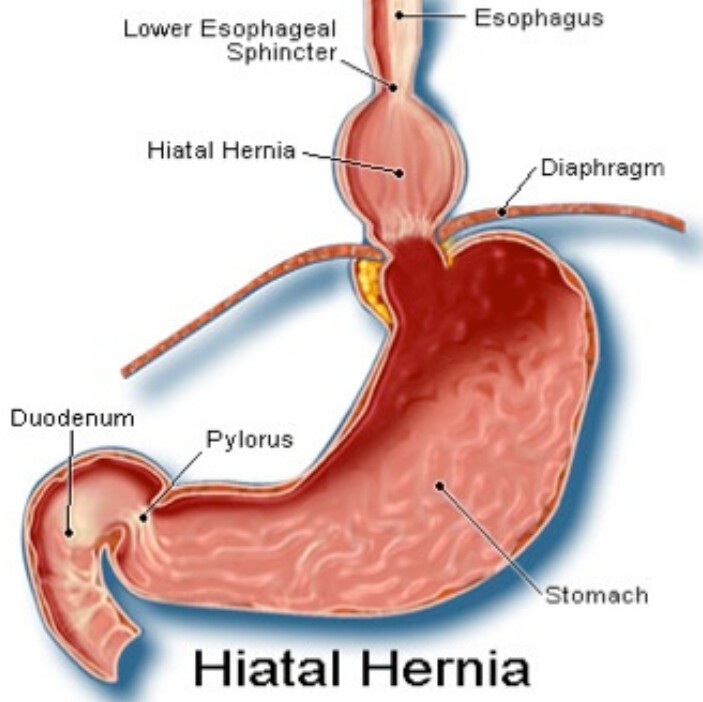
This condition occurs when the upper part of the stomach pushes through the diaphragm and into the chest cavity. This causes acid reflux, and since the stomach is on the upper left portion of the abdomen, the condition will cause pain under the left breast and armpit. A hiatal hernia can lead to stomach contents traveling inside the chest. You may experience dull or sharp pain under your breast.
Other symptoms of hiatal hernia include:
- Belching
- Heartburn
- Trouble swallowing
- Sharp and stabbing pain similar to that of a heart attack
- Inability to pass stool or gas
However, some people do not experience any symptoms.
Treatment
To relieve the discomfort from a hiatal hernia, you should avoid lying down or exercising immediately after meals.
The doctor might prescribe medication to reduce, neutralize, or reduce the production of stomach acid. In extreme cases, the doctor recommends surgery to reposition the stomach back into the abdominal cavity.
Prevention
Smoking and obesity are high-risk causes of Hiatal hernias. To prevent hiatal hernia, cut back on smoking with the intent to quit and manage your weight. You should also cut back on consuming huge amounts of acid-producing foods.
5. Flatulence
Flatulence refers to gas generated in the intestine or stomach. Excess intestinal gas usually comes from smoking, overeating, chewing gum, or certain foods. The air trapped at the Splenic flexure or transverse colon can lead to sharp abdominal pain, which may radiate to the left chest. You may also feel bloat or cramping.
Treatment
To relieve the pain caused by Flatulence. You can try some home remedies such as ginger and Chamomile tea, which can help release the gas from the body.
Pain under Left Breast When Breathing – 2 Lung Problems
1. Pleurisy
Pleura is a protective layer surrounding the lungs. If the pleura surrounding the left lung is infected and inflamed, you will feel pain under the left ribs. The pain can also be caused by lung cancer and rheumatoid arthritis.
According to doctors from the Mayo Clinic, pleurisy can cause sudden and severe pains in the upper abdomen when you cough or sneeze. The pain may also radiate to the area below your breast.[4]
Pleurisy was once a severe illness that caused some historical figures, including Benjamin Franklin and Catherine de Medici. Nowadays, due to the use of antibiotics, pleurisy has been easily cured.[5]
A common symptom of pleurisy is sharp stabbing pain when taking a deep breath. Other symptoms include:
- A dry cough
- Pain in the shoulders
- Shortness of breath
The pain gets worse when you sneeze, cough, or walk around.
Treatment
A physician, in most cases, will recommend rest, preferably lying on your side, for pain relief. If the pain is particularly severe, you should seek immediate medical attention. The doctor may prescribe pain-relieving medication such as non-steroidal anti-inflammatory drugs (NSAIDs).
Sometimes, the doctor may need to draw blood to run tests. They may also suggest doing a chest X-ray and CT scan. On top of this, they may need to extract a pleural lung tissue sample to conduct a biopsy.
If the pleurisy is due to a viral infection, it will improve in a few days. However, a bacterial infection requires antibacterial therapy. If the pain is due to lung cancer, then regular screening and early intervention are the best cause of action.
2. Pneumonia
Pneumonia is a lung infection caused by viral or bacterial infections in the respiratory tract. Sometimes it is also a complication of the flu.
According to doctors from WebMD, Pneumonia could cause sharp or stabbing pains in your chest. You may experience a cough, fever, and hard breath.[6]
If you suffer from pneumonia, you’d better go to a hospital for treatment.
Chest Injury or Pulled Muscles That Cause Pain Under Left Breast
1. Bone injury or Pulled Muscles
Any trauma or injury to the chest cavity can cause pain around the injured area. This pain can range from mild to severe, depending on the extent of the damage. Sometimes, the pain from a fractured or sprained rib or pulled muscle can also cause severe pain under your left rib and breast.
In addition, inflammation of the body due or nerve damage to your chest can also lead to sharp, shooting pain in the left side of the chest.
WebMD doctors say you need to see your doctor for a complete diagnosis to rule out the possibility that the pain doesn’t result from organ damage. Moreover, it is essential to have enough rest and take pain relief medication, which can help accelerate the recovery of rib fractures.
2. Costochondritis
Costochondritis can cause pain and tenderness in the breastbone. This pain can range from mild to severe. You may feel sharp and stabbing pain under the left breast when touched. The pain may get worse when you have a deep breath or cough.
Costochondritis is an inflammation of the costal cartilage which connects the breastbone or sternum with the ribs. The exact cause of this chest pain is still unclear. However, the potential cause may include trauma, muscle strain, rib cage injury, infection, or arthritis.
You should avoid strenuous activities such as running or weight lifting to relieve the pain. Cold or heat compression therapy can also help relieve pain. If the pain persists long, you should consult a doctor for medical advice. They can prescribe some anti-inflammatory or OTC pain relievers.
Other Causes of Pain Under Left Breast
Other than digestive and heart-related problems, other causes include:
1. Enlarged Spleen
An enlarged spleen can cause severe pain under the left breast and side. If the spleen bursts and releases its juice, it will also cause pain. Underlying conditions such as recurring liver cirrhosis and chronic liver disease may interact with and affect the spleen.
Each of these cases has distinct symptoms. The following symptoms characterize an enlarged spleen:
- Extreme tiredness and anemia
- Pain and tenderness
- Feeling uncomfortable when eating even a small meal
- Bleeding easily
A burst spleen, on the other hand, has the following symptoms:
- Pain under the ribs with the area feeling tender when touched
- Fast heart rate
- Bleeding
- Dizziness
Treatment
If you suspect a busted spleen, you should seek medical attention immediately since the chance of bleeding to death are very high. The doctor will examine your stomach for an enlarged spleen and may recommend further tests. This includes an MRI or CT scan, or ultrasound.
The doctor will prescribe medication if the splenic or liver disease is manageable with medical therapy. However, if detected too late, the doctor will suggest you undergo surgery.
Prevention
You can also damage the spleen during high-impact sports. For this reason, you need to wear protective sports equipment. You should also wear a seat belt when in the car in case of an accident.
Liver cirrhosis is another cause of spleen issues, so you should reduce alcohol consumption.
2. Pain under the Left Breast During Pregnancy
Pregnant women can sometimes feel pain and soreness under the left breast during pregnancy. This results from pressure from the top part of the uterus as the baby grows or when the baby kicks.
This pain can get worse, especially when the expectant mother leans forward. As the pregnancy grows, the muscles and tissues stretch and worsen the pain.
With that said, the pregnant woman’s body is changing, and as the womb expands, it will push the internal organs out of place. On top of this, the woman will experience a chemical imbalance in the body.
Other causes of female pain during pregnancy include:
- Acid reflux causing heartburn
- The repositioning of the ribcage to accommodate the baby in the abdomen
3. Stress

Do you know that you may experience pain in your chest area when you are under a lot of stress?
According to doctors from Anxietycentre.com, stress can cause muscles to tense up, leading to sharp pain in the left breast. Other common symptoms of stress are insomnia, obesity, digestive problems, frequent colds, gastrointestinal problems, and cardiovascular diseases.[7]
There are some simple ways to relieve stress effectively. You can listen to some calm music to relax your body, which can help reduce cortisol and relieve high blood pressure. Green tea contains healthy antioxidants and theanine, which can help calm your nervous system. You can drink some green tea after each meal, and this can also help relieve the pain caused by digestive problems.
4. Panic Attack
Panic attacks can cause pain in your chest or spasms in your digestive tract. This pain is often mistaken for a heart attack or angina because it usually occurs on the left side of the chest.
In addition, panic attacks can lead to high blood pressure and a rapid heartbeat, harming your heart health. The other symptoms include sweating, trembling, nausea, numbness, tingling sensations, or shortness of breath.
There are some home remedies to get rid of panic attacks. Deep breaths can help calm your mind and body. This can remove a lot of symptoms of a panic attack. You can also drink some Chamomile. It is rich in calcium and magnesium, which help ease panic attacks.
5. Breast Cancer
Breast cancer is the most common cancer among women in the United States. Many women worry their breast pain may be a sign of breast cancer.
According to Stacy Simon from Cancer.org, the most common symptom of breast cancer is breast lumps. It is hard and painless in most cases, but sometimes lumps are also painful and cause swelling in or around your breast, collarbone, or underarms.[8]
The spread of breast cancer may cause lumps around the clavicle or armpits into these areas. However, not all lumps are cancer. According to new cancer research, 90% of breast pain is usually unrelated to breast cancer.
Breast swelling can also be caused by other causes, such as inflammatory breast cancer or benign breast diseases, such as cysts. You should see your doctor immediately if you find a swelling lump or other change in your breast.
When to See a Doctor?
If you or a loved one is experiencing pain in the chest, especially under the left breast, you should seek immediate medical attention. The above might not be an exhaustive list of the causes of this pain, and you should see a doctor if you experience the following:
- Pain along with trouble breathing, fever, vomiting, nausea, cough, dizziness, and rapid heartbeat
- Sharp pains last for a long time
- Pressure, crushing, or tightness in the chest
- A change in your stool, such as oily, bloody, or tarry
- Chest pain that does not ease up with rest
- Pain spreads to other body parts, such as the neck, back, jaw, and shoulders.
- Pain persists after you have tried all the below.

